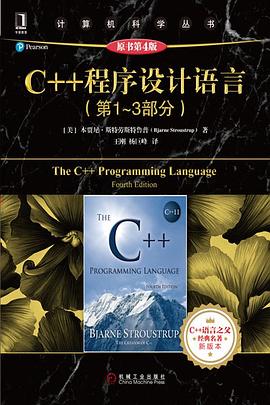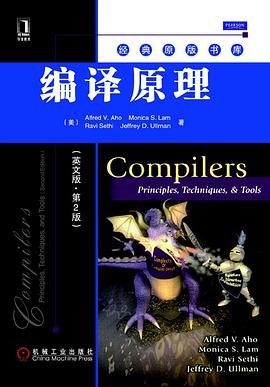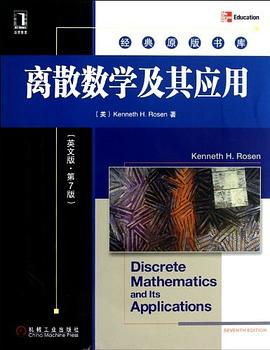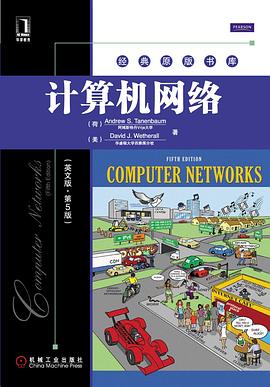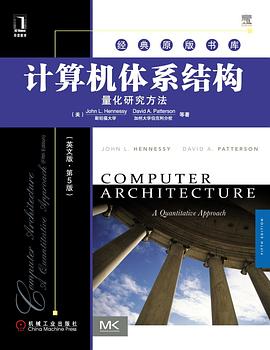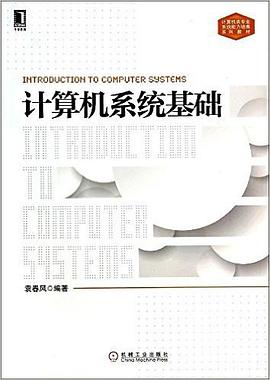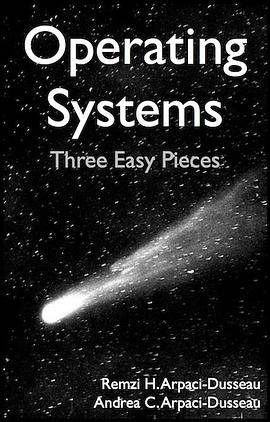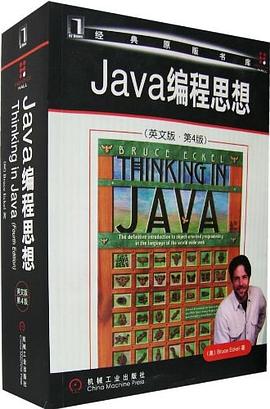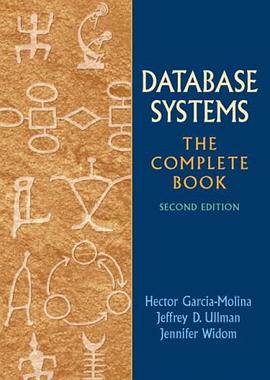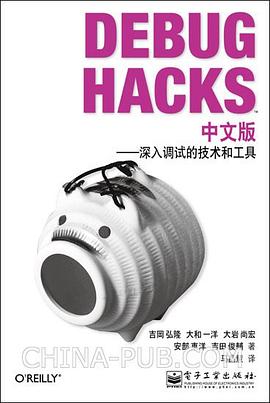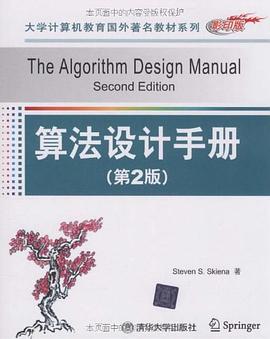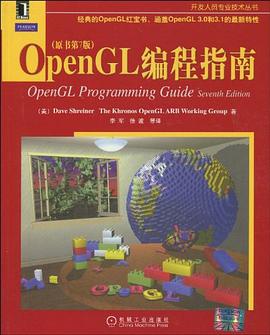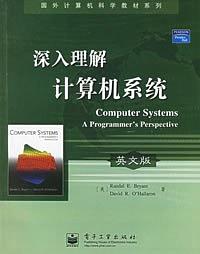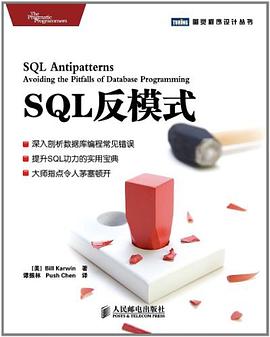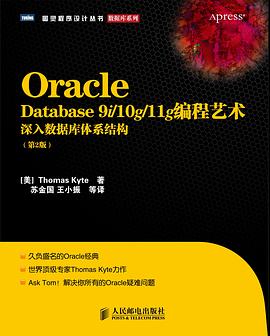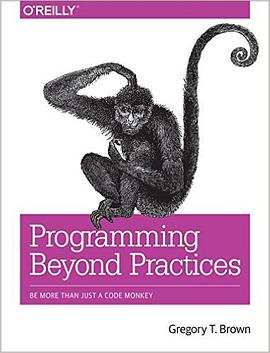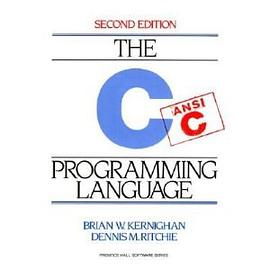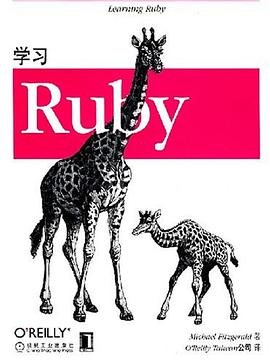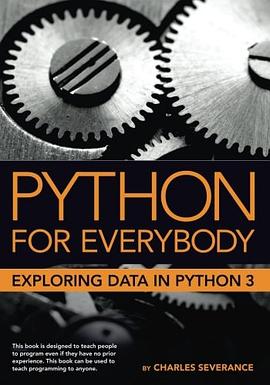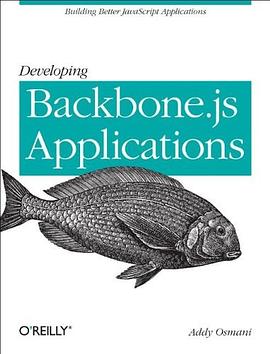Contents
Preface xix About the Authors xxxv
1
A Tour of Computer Systems 1
1.1 Information Is Bits + Context 3
1.2 Programs Are Translated by Other Programs into Different Forms 4
1.3 It Pays to Understand How Compilation Systems Work 6
1.4 Processors Read and Interpret Instructions Stored in Memory 7
1.4.1 Hardware Organization of a System 8
1.4.2 Running the helloProgram 10
1.5 Caches Matter 11
1.6 Storage Devices Form a Hierarchy 14
1.7 The Operating System Manages the Hardware 14
1.7.1 Processes 15
1.7.2 Threads 17
1.7.3 Virtual Memory 18
1.7.4 Files 19
1.8 Systems Communicate with Other Systems Using Networks 19
1.9 Important Themes 22
1.9.1 Amdahl’s Law 22
1.9.2 Concurrency and Parallelism 24
1.9.3 The Importance of Abstractions in Computer Systems 26
1.10 Summary 27 Bibliographic Notes 28 Solutions to Practice Problems 28
Part I Program Structure and Execution
2
Representing and Manipulating Information 31
2.1 Information Storage 34
2.1.1 Hexadecimal Notation 36
2.1.2 Data Sizes 39
2.1.3 Addressing and Byte Ordering 42
2.1.4 Representing Strings 49
2.1.5 Representing Code 49
2.1.6 Introduction to Boolean Algebra 50
2.1.7 Bit-Level Operations in C 54
2.1.8 Logical Operations in C 56
2.1.9 Shift Operations in C 57
2.2 Integer Representations 59
2.2.1 Integral Data Types 60
2.2.2 Unsigned Encodings 62
2.2.3 Two’s-Complement Encodings 64
2.2.4 Conversions between Signed and Unsigned 70
2.2.5 Signed versus Unsigned in C 74
2.2.6 Expanding the Bit Representation of a Number 76
2.2.7 Truncating Numbers 81
2.2.8 Advice on Signed versus Unsigned 83
2.3 Integer Arithmetic 84
2.3.1 Unsigned Addition 84
2.3.2 Two’s-Complement Addition 90
2.3.3 Two’s-Complement Negation 95
2.3.4 Unsigned Multiplication 96
2.3.5 Two’s-Complement Multiplication 97
2.3.6 Multiplying by Constants 101
2.3.7 Dividing by Powers of 2 103
2.3.8 Final Thoughts on Integer Arithmetic 107
2.4 Floating Point 108
2.4.1 Fractional Binary Numbers 109
2.4.2 IEEE Floating-Point Representation 112
2.4.3 Example Numbers 115
2.4.4 Rounding 120
2.4.5 Floating-Point Operations 122
2.4.6 Floating Point in C 124
2.5 Summary 126
Bibliographic Notes 127
Homework Problems 128
Solutions to Practice Problems 143
3
Machine-Level Representation of Programs 163
3.1 A Historical Perspective 166
3.2 Program Encodings 169
3.2.1 Machine-Level Code 170
3.2.2 Code Examples 172
3.2.3 Notes on Formatting 175
3.3 Data Formats 177
3.4 Accessing Information 179
3.4.1 Operand Speci.ers 180
3.4.2 Data Movement Instructions 182
3.4.3 Data Movement Example 186
3.4.4 Pushing and Popping Stack Data 189
3.5 Arithmetic and Logical Operations 191
3.5.1 Load Effective Address 191
3.5.2 Unary and Binary Operations 194
3.5.3 Shift Operations 194
3.5.4 Discussion 196
3.5.5 Special Arithmetic Operations 197
3.6 Control 200
3.6.1 Condition Codes 201
3.6.2 Accessing the Condition Codes 202
3.6.3 Jump Instructions 205
3.6.4 Jump Instruction Encodings 207
3.6.5 Implementing Conditional Branches withConditional Control 209
3.6.6 Implementing Conditional Branches withConditional Moves 214
3.6.7 Loops 220
3.6.8 Switch Statements 232
3.7 Procedures 238
3.7.1 The Run-Time Stack 239
3.7.2 Control Transfer 241
3.7.3 Data Transfer 245
3.7.4 Local Storage on the Stack 248
3.7.5 Local Storage in Registers 251
3.7.6 Recursive Procedures 253
3.8 Array Allocation and Access 255
3.8.1 Basic Principles 255
3.8.2 Pointer Arithmetic 257
3.8.3 Nested Arrays 258
3.8.4 Fixed-Size Arrays 260
3.8.5 Variable-Size Arrays 262
3.9 Heterogeneous Data Structures 265
3.9.1 Structures 265
3.9.2 Unions 269
3.9.3 Data Alignment 273
3.10 Combining Control and Data in Machine-Level Programs 276
3.10.1 Understanding Pointers 277
3.10.2 Life in the Real World: Using the gdbDebugger 279
3.10.3 Out-of-Bounds Memory References and Buffer Over.ow 279
3.10.4 Thwarting Buffer Over.ow Attacks 284
3.10.5 Supporting Variable-Size Stack Frames 290
3.11 Floating-Point Code 293
3.11.1 Floating-Point Movement and Conversion Operations 296
3.11.2 Floating-Point Code in Procedures 301
3.11.3 Floating-Point Arithmetic Operations 302
3.11.4 De.ning and Using Floating-Point Constants 304
3.11.5 Using Bitwise Operations in Floating-Point Code 305
3.11.6 Floating-Point Comparison Operations 306
3.11.7 Observations about Floating-Point Code 309
3.12 Summary 309
Bibliographic Notes 310
Homework Problems 311
Solutions to Practice Problems 325
4
Processor Architecture 351
4.1 The Y86-64 Instruction Set Architecture 355
4.1.1 Programmer-Visible State 355
4.1.2 Y86-64 Instructions 356
4.1.3 Instruction Encoding 358
4.1.4 Y86-64 Exceptions 363
4.1.5 Y86-64 Programs 364
4.1.6 Some Y86-64 Instruction Details 370
4.2 Logic Design and the Hardware Control Language HCL 372
4.2.1 Logic Gates 373
4.2.2 Combinational Circuits and HCL Boolean Expressions 374
4.2.3 Word-Level Combinational Circuits and HCLInteger Expressions 376
4.2.4 Set Membership 380
4.2.5 Memory and Clocking 381
4.3 Sequential Y86-64 Implementations 384
4.3.1 Organizing Processing into Stages 384
4.3.2 SEQ Hardware Structure 396
4.3.3 SEQ Timing 400
4.3.4 SEQ Stage Implementations 404
4.4 General Principles of Pipelining 412
4.4.1 Computational Pipelines 412
4.4.2 A Detailed Look at Pipeline Operation 414
4.4.3 Limitations of Pipelining 416
4.4.4 Pipelining a System with Feedback 419
4.5 Pipelined Y86-64 Implementations 421
4.5.1 SEQ+: Rearranging the Computation Stages 421
4.5.2 Inserting Pipeline Registers 422
4.5.3 Rearranging and Relabeling Signals 426
4.5.4 Next PC Prediction 427
4.5.5 Pipeline Hazards 429
4.5.6 Exception Handling 444
4.5.7 PIPE Stage Implementations 447
4.5.8 Pipeline Control Logic 455
4.5.9 Performance Analysis 464
4.5.10 Un.nished Business 468
4.6 Summary 470
4.6.1 Y86-64 Simulators 472
Bibliographic Notes 473
Homework Problems 473
Solutions to Practice Problems 480
5
Optimizing Program Performance 495
5.1 Capabilities and Limitations of Optimizing Compilers 498
5.2 Expressing Program Performance 502
5.3 Program Example 504
5.4 Eliminating Loop Inef.ciencies 508
5.5 Reducing Procedure Calls 512
5.6 Eliminating Unneeded Memory References 514
5.7 Understanding Modern Processors 517
5.7.1 Overall Operation 518
5.7.2 Functional Unit Performance 523
5.7.3 An Abstract Model of Processor Operation 525
5.8 Loop Unrolling 531
5.9 Enhancing Parallelism 536
5.9.1 Multiple Accumulators 536
5.9.2 Reassociation Transformation 541
5.10 Summary of Results for Optimizing Combining Code 547
5.11 Some Limiting Factors 548
5.11.1 Register Spilling 548
5.11.2 Branch Prediction and Misprediction Penalties 549
5.12 Understanding Memory Performance 553
5.12.1 Load Performance 554
5.12.2 Store Performance 555
5.13 Life in the Real World: Performance Improvement Techniques 561
5.14 Identifying and Eliminating Performance Bottlenecks 562
5.14.1 Program Pro.ling 562
5.14.2 Using a Pro.ler to Guide Optimization 565
5.15 Summary 568
Bibliographic Notes 569
Homework Problems 570
Solutions to Practice Problems 573
6
The Memory Hierarchy 579
6.1 Storage Technologies 581
6.1.1 Random Access Memory 581
6.1.2 Disk Storage 589
6.1.3 Solid State Disks 600
6.1.4 Storage Technology Trends 602
6.2 Locality 604
6.2.1 Locality of References to Program Data 606
6.2.2 Locality of Instruction Fetches 607
6.2.3 Summary of Locality 608
6.3 The Memory Hierarchy 609
6.3.1 Caching in the Memory Hierarchy 610
6.3.2 Summary of Memory Hierarchy Concepts 614
6.4 Cache Memories 614
6.4.1 Generic Cache Memory Organization 615
6.4.2 Direct-Mapped Caches 617
6.4.3 Set Associative Caches 624
6.4.4 Fully Associative Caches 626
6.4.5 Issues with Writes 630
6.4.6 Anatomy of a Real Cache Hierarchy 631
6.4.7 Performance Impact of Cache Parameters 631
6.5 Writing Cache-Friendly Code 633
6.6 Putting It Together: The Impact of Caches on Program Performance 639
6.6.1 The Memory Mountain 639
6.6.2 Rearranging Loops to Increase Spatial Locality 643
6.6.3 Exploiting Locality in Your Programs 647
6.7 Summary 648
Bibliographic Notes 648
Homework Problems 649
Solutions to Practice Problems 660
Part II Running Programs on a System
7
Linking 669
7.1 Compiler Drivers 671
7.2 Static Linking 672
7.3 Object Files 673
7.4 Relocatable Object Files 674
7.5 Symbols and Symbol Tables 675
7.6 Symbol Resolution 679
7.6.1 How Linkers Resolve Duplicate Symbol Names 680
7.6.2 Linking with Static Libraries 684
7.6.3 How Linkers Use Static Libraries to Resolve References 688
7.7 Relocation 689
7.7.1 Relocation Entries 690
7.7.2 Relocating Symbol References 691
7.8 Executable Object Files 695
7.9 Loading Executable Object Files 697
7.10 Dynamic Linking with Shared Libraries 698
7.11 Loading and Linking Shared Libraries from Applications 701
7.12 Position-Independent Code (PIC) 704
7.13 Library Interpositioning 707
7.13.1 Compile-Time Interpositioning 708
7.13.2 Link-Time Interpositioning 708
7.13.3 Run-Time Interpositioning 710
7.14 Tools for Manipulating Object Files 713
7.15 Summary 713
Bibliographic Notes 714
Homework Problems 714
Solutions to Practice Problems 717
8
Exceptional Control Flow 721
8.1 Exceptions 723
8.1.1 Exception Handling 724
8.1.2 Classes of Exceptions 726
8.1.3 Exceptions in Linux/x86-64 Systems 729
8.2 Processes 732
8.2.1 Logical Control Flow 732
8.2.2 Concurrent Flows 733
8.2.3 Private Address Space 734
8.2.4 User and Kernel Modes 734
8.2.5 Context Switches 736
8.3 System Call Error Handling 737
8.4 Process Control 738
8.4.1 Obtaining Process IDs 739
8.4.2 Creating and Terminating Processes 739
8.4.3 Reaping Child Processes 743
8.4.4 Putting Processes to Sleep 749
8.4.5 Loading and Running Programs 750
8.4.6 Using forkand execveto Run Programs 753
8.5 Signals 756
8.5.1 Signal Terminology 758
8.5.2 Sending Signals 759
8.5.3 Receiving Signals 762
8.5.4 Blocking and Unblocking Signals 764
8.5.5 Writing Signal Handlers 766
8.5.6 Synchronizing Flows to Avoid Nasty Concurrency Bugs 776
8.5.7 Explicitly Waiting for Signals 778
8.6 Nonlocal Jumps 781
8.7 Tools for Manipulating Processes 786
8.8 Summary 787
Bibliographic Notes 787
Homework Problems 788
Solutions to Practice Problems 795
9
Virtual Memory 801
9.1 Physical and Virtual Addressing 803
9.2 Address Spaces 804
9.3 VM as a Tool for Caching 805
9.3.1 DRAM Cache Organization 806
9.3.2 Page Tables 806
9.3.3 Page Hits 808
9.3.4 Page Faults 808
9.3.5 Allocating Pages 810
9.3.6 Locality to the Rescue Again 810
9.4 VM as a Tool for Memory Management 811
9.5 VM as a Tool for Memory Protection 812
9.6 Address Translation 813
9.6.1 Integrating Caches and VM 817
9.6.2 Speeding Up Address Translation with a TLB 817
9.6.3 Multi-Level Page Tables 819
9.6.4 Putting It Together: End-to-End Address Translation 821
9.7 Case Study: The Intel Core i7/Linux Memory System 825
9.7.1 Core i7 Address Translation 826
9.7.2 Linux Virtual Memory System 828
9.8 Memory Mapping 833
9.8.1 Shared Objects Revisited 833
9.8.2 The forkFunction Revisited 836
9.8.3 The execveFunction Revisited 836
9.8.4 User-Level Memory Mapping with the mmapFunction 837
9.9 Dynamic Memory Allocation 839
9.9.1 The mallocand freeFunctions 840
9.9.2 Why Dynamic Memory Allocation 843
9.9.3 Allocator Requirements and Goals 844
9.9.4 Fragmentation 846
9.9.5 Implementation Issues 846
9.9.6 Implicit Free Lists 847
9.9.7 Placing Allocated Blocks 849
9.9.8 Splitting Free Blocks 849
9.9.9 Getting Additional Heap Memory 850
9.9.10 Coalescing Free Blocks 850
9.9.11 Coalescing with Boundary Tags 851
9.9.12 Putting It Together: Implementing a Simple Allocator 854
9.9.13 Explicit Free Lists 862
9.9.14 Segregated Free Lists 863
9.10 Garbage Collection 865
9.10.1 Garbage Collector Basics 866
9.10.2 Mark&Sweep Garbage Collectors 867
9.10.3 Conservative Mark&Sweep for C Programs 869
9.11 Common Memory-Related Bugs in C Programs 870
9.11.1 Dereferencing Bad Pointers 870
9.11.2 Reading Uninitialized Memory 871
9.11.3 Allowing Stack Buffer Over.ows 871
9.11.4 Assuming That Pointers and the Objects They Point to Are the Same Size 872
9.11.5 Making Off-by-One Errors 872
9.11.6 Referencing a Pointer Instead of the Object It Points To 873
9.11.7 Misunderstanding Pointer Arithmetic 873
9.11.8 Referencing Nonexistent Variables 874
9.11.9 Referencing Data in Free Heap Blocks 874
9.11.10 Introducing Memory Leaks 875
9.12 Summary 875
Bibliographic Notes 876
Homework Problems 876
Solutions to Practice Problems 880
Part III Interaction and Communication between Programs
10
System-Level I/O 889
10.1 Unix I/O 890
10.2 Files 891
10.3 Opening and Closing Files 893
10.4 Reading and Writing Files 895
10.5 Robust Reading and Writing with the RioPackage 897
10.5.1 Rio Unbuffered Input and Output Functions 897
10.5.2 Rio Buffered Input Functions 898
10.6 Reading File Metadata 903
10.7 Reading Directory Contents 905
10.8 Sharing Files 906
10.9 I/O Redirection 909
10.10 Standard I/O 911
10.11 Putting It Together: Which I/O Functions Should I Use 911
10.12 Summary 913
Bibliographic Notes 914
Homework Problems 914
Solutions to Practice Problems 915
11
Network Programming 917
11.1 The Client-Server Programming Model 918
11.2 Networks 919
11.3 The Global IP Internet 924
11.3.1 IP Addresses 925
11.3.2 Internet Domain Names 927
11.3.3 Internet Connections 929
11.4 The Sockets Interface 932
11.4.1 Socket Address Structures 933
11.4.2 The socketFunction 934
11.4.3 The connectFunction 934
11.4.4 The bindFunction 935
11.4.5 The listenFunction 935
11.4.6 The acceptFunction 936
11.4.7 Host and Service Conversion 937
11.4.8 Helper Functions for the Sockets Interface 942
11.4.9 Example Echo Client and Server 944
11.5 Web Servers 948
11.5.1 Web Basics 948
11.5.2 Web Content 949
11.5.3 HTTP Transactions 950
11.5.4 Serving Dynamic Content 953
11.6 Putting It Together: The TinyWeb Server 956
11.7 Summary 964
Bibliographic Notes 965
Homework Problems 965
Solutions to Practice Problems 966
12
Concurrent Programming 971
12.1 Concurrent Programming with Processes 973
12.1.1 A Concurrent Server Based on Processes 974
12.1.2 Pros and Cons of Processes 975
12.2 Concurrent Programming with I/O Multiplexing 977
12.2.1 A Concurrent Event-Driven Server Based on I/O Multiplexing 980
12.2.2 Pros and Cons of I/O Multiplexing 985
12.3 Concurrent Programming with Threads 985
12.3.1 Thread Execution Model 986
12.3.2 Posix Threads 987
12.3.3 Creating Threads 988
12.3.4 Terminating Threads 988
12.3.5 Reaping Terminated Threads 989
12.3.6 Detaching Threads 989
12.3.7 Initializing Threads 990
12.3.8 A Concurrent Server Based on Threads 991
12.4 Shared Variables in Threaded Programs 992
12.4.1 Threads Memory Model 993
12.4.2 Mapping Variables to Memory 994
12.4.3 Shared Variables 995
12.5 Synchronizing Threads with Semaphores 995
12.5.1 Progress Graphs 999
12.5.2 Semaphores 1001
12.5.3 Using Semaphores for Mutual Exclusion 1002
12.5.4 Using Semaphores to Schedule Shared Resources 1004
12.5.5 Putting It Together: A Concurrent Server Based on
Prethreading 1008
12.6 Using Threads for Parallelism 1013
12.7 Other Concurrency Issues 1020
12.7.1 Thread Safety 1020
12.7.2 Reentrancy 1023
12.7.3 Using Existing Library Functions in Threaded Programs 1024
12.7.4 Races 1025
12.7.5 Deadlocks 1027
12.8 Summary 1030
Bibliographic Notes 1030
Homework Problems 1031
Solutions to Practice Problems 1036
A
Error Handling 1041
A.1 Error Handling in Unix Systems 1042
A.2 Error-Handling Wrappers 1043
References 1047 Index 1053
· · · · · · (
收起)
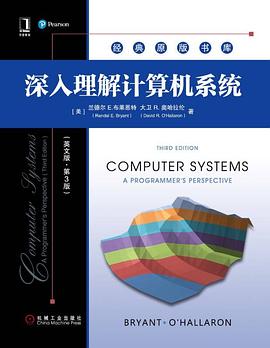
 C Primer Plus pdf epub mobi txt 電子書 下載
C Primer Plus pdf epub mobi txt 電子書 下載 C++ 程序設計語言(第 1 - 3 部分)(原書第 4 版) pdf epub mobi txt 電子書 下載
C++ 程序設計語言(第 1 - 3 部分)(原書第 4 版) pdf epub mobi txt 電子書 下載 編譯原理 pdf epub mobi txt 電子書 下載
編譯原理 pdf epub mobi txt 電子書 下載 離散數學及其應用 pdf epub mobi txt 電子書 下載
離散數學及其應用 pdf epub mobi txt 電子書 下載 計算機網絡 pdf epub mobi txt 電子書 下載
計算機網絡 pdf epub mobi txt 電子書 下載 計算機體係結構 pdf epub mobi txt 電子書 下載
計算機體係結構 pdf epub mobi txt 電子書 下載 計算機係統基礎 pdf epub mobi txt 電子書 下載
計算機係統基礎 pdf epub mobi txt 電子書 下載 Operating Systems pdf epub mobi txt 電子書 下載
Operating Systems pdf epub mobi txt 電子書 下載 Java編程思想 pdf epub mobi txt 電子書 下載
Java編程思想 pdf epub mobi txt 電子書 下載 Database Systems pdf epub mobi txt 電子書 下載
Database Systems pdf epub mobi txt 電子書 下載 Debug Hacks中文版 pdf epub mobi txt 電子書 下載
Debug Hacks中文版 pdf epub mobi txt 電子書 下載 算法設計手冊 pdf epub mobi txt 電子書 下載
算法設計手冊 pdf epub mobi txt 電子書 下載 OpenGL編程指南(原書第7版) pdf epub mobi txt 電子書 下載
OpenGL編程指南(原書第7版) pdf epub mobi txt 電子書 下載 深入理解計算機係統 pdf epub mobi txt 電子書 下載
深入理解計算機係統 pdf epub mobi txt 電子書 下載 lex與yacc pdf epub mobi txt 電子書 下載
lex與yacc pdf epub mobi txt 電子書 下載 Python網絡編程(第3版) pdf epub mobi txt 電子書 下載
Python網絡編程(第3版) pdf epub mobi txt 電子書 下載 SQL反模式 pdf epub mobi txt 電子書 下載
SQL反模式 pdf epub mobi txt 電子書 下載 Oracle Database 9i/10g/11g編程藝術 pdf epub mobi txt 電子書 下載
Oracle Database 9i/10g/11g編程藝術 pdf epub mobi txt 電子書 下載 Programming Beyond Practices: Be More Than Just a Code Monkey pdf epub mobi txt 電子書 下載
Programming Beyond Practices: Be More Than Just a Code Monkey pdf epub mobi txt 電子書 下載 An Elementary Introduction to the Wolfram Language pdf epub mobi txt 電子書 下載
An Elementary Introduction to the Wolfram Language pdf epub mobi txt 電子書 下載 Introduction to Tornado pdf epub mobi txt 電子書 下載
Introduction to Tornado pdf epub mobi txt 電子書 下載 Programming Concurrency on the JVM pdf epub mobi txt 電子書 下載
Programming Concurrency on the JVM pdf epub mobi txt 電子書 下載 The C Programming Language, 2nd Eition pdf epub mobi txt 電子書 下載
The C Programming Language, 2nd Eition pdf epub mobi txt 電子書 下載 學習Ruby pdf epub mobi txt 電子書 下載
學習Ruby pdf epub mobi txt 電子書 下載 C# in Depth, 3rd Edition pdf epub mobi txt 電子書 下載
C# in Depth, 3rd Edition pdf epub mobi txt 電子書 下載 算法概論 pdf epub mobi txt 電子書 下載
算法概論 pdf epub mobi txt 電子書 下載 R Graphics Cookbook pdf epub mobi txt 電子書 下載
R Graphics Cookbook pdf epub mobi txt 電子書 下載 Python for Everybody pdf epub mobi txt 電子書 下載
Python for Everybody pdf epub mobi txt 電子書 下載 Ruby on Rails pdf epub mobi txt 電子書 下載
Ruby on Rails pdf epub mobi txt 電子書 下載 Developing Backbone.js Applications pdf epub mobi txt 電子書 下載
Developing Backbone.js Applications pdf epub mobi txt 電子書 下載

